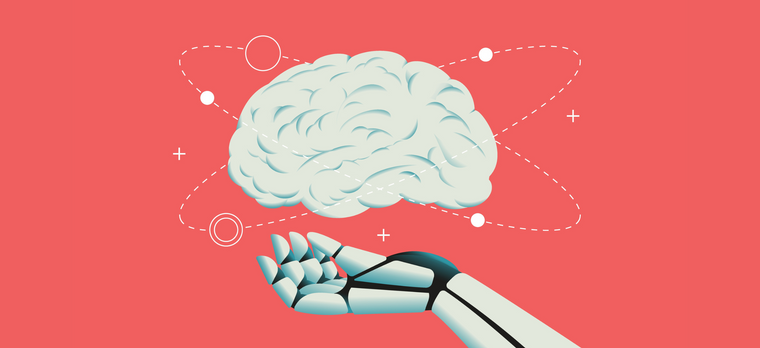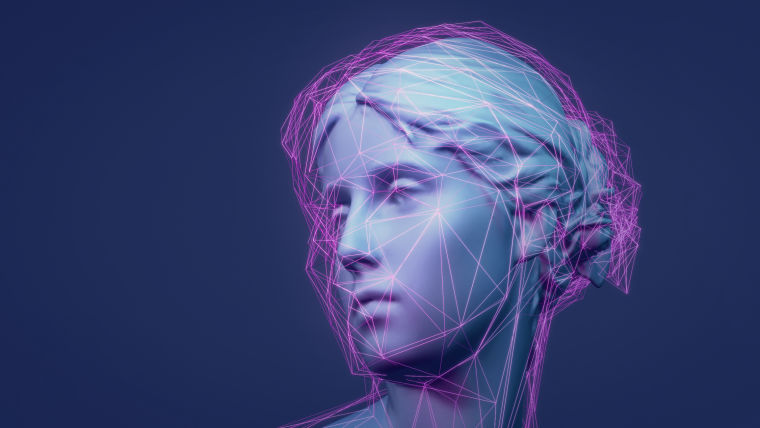The human effect? Putting AI to the storytelling test
As we embark on the exciting journey of technological progress, we ask ourselves how can we in insights take advantage of AI rather than have it take advantage of us? How much can it amplify our capabilities?
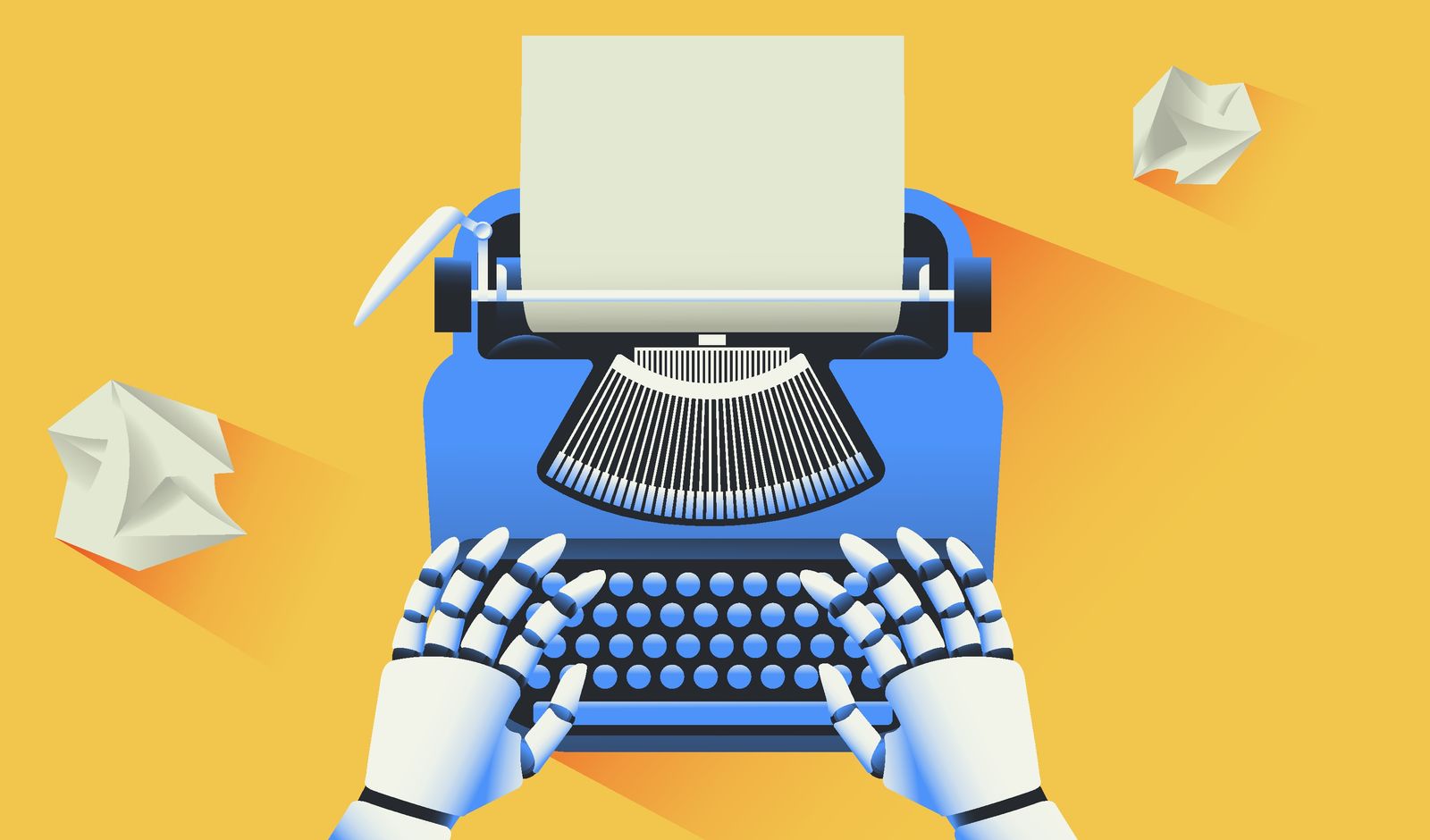
Amid the rapid advancements in artificial intelligence, a quiet yet resounding fear lingers within the hearts of many. According to PWC, a third of us are concerned about the threat of AI replacing our roles within the next three years[1]. As we embark on this exciting journey of technological progress, we ask ourselves how can we, in insights, take advantage of AI rather than have it take advantage of us. How much can it amplify our capabilities? Or is it a terrible force poised to hinder humanity's potential?
With 39 countries starting back in 2018, the yearly global survey conducted by the Worldwide Independent Network of market research (WIN) provided a great data set to pit the power of the human mind against the computational prowess of AI. But we couldn’t do it alone. We gathered a team of experts to help us in our battle of human versus machine. Inspirient is an analytics platform that uses generative AI to analyse multiple data points and produce PowerPoint presentations in minutes. Combined with ChatGPT4 as a plug-in, it uses the PPT to generate stories about the data. RedC is a strategic research company based in Dublin and London (and a well-known member of the WIN network). Finally, we are Keen as Mustard (KaM), a global marketing consultancy specialising in communicating insights and market research. Our goal? To determine the effectiveness and efficiency of each team in using data to develop stories that are insightful and engaging - a task of immense significance for the world of market research.
The challenge, should they choose to accept it…
The challenge for the ‘humans’ at RedC+KaM and the ‘machines’ at Inspirient was: to use the WIN data to prepare a presentation for the CEO and director of a global communications agency, suggesting the best stories to create content for the media. The objective of the project was to use the stories to gain maximum awareness for the research and for the network that carried it out. Beyond the agency client, the audience for the stories would therefore be journalists from national media in US and EMEA.
Together with our partners, we specified a set of materials we wanted to produce:
A PPT presentation/report suitable for use in a 30-minute client meeting
A press release targeting national media
A longer-form report or white paper to use as a follow-up
LinkedIn posts about the stories with suggested images
We supplied the raw data set to both the human and the machine teams and pushed the start button.
Machine-made efficiency vs man-made excellence
As we saw when the results were presented at the WIN annual conference in Slovenia, when comparing the AI and the human-powered outcomes, the differences jumped out immediately. The speed of AI is its greatest advantage when put to the test. The Insprient platform demonstrated unfathomable efficiency compared to humans when it came to analysing data, taking the raw data set, and creating a PowerPoint presentation – which it did in just three minutes.
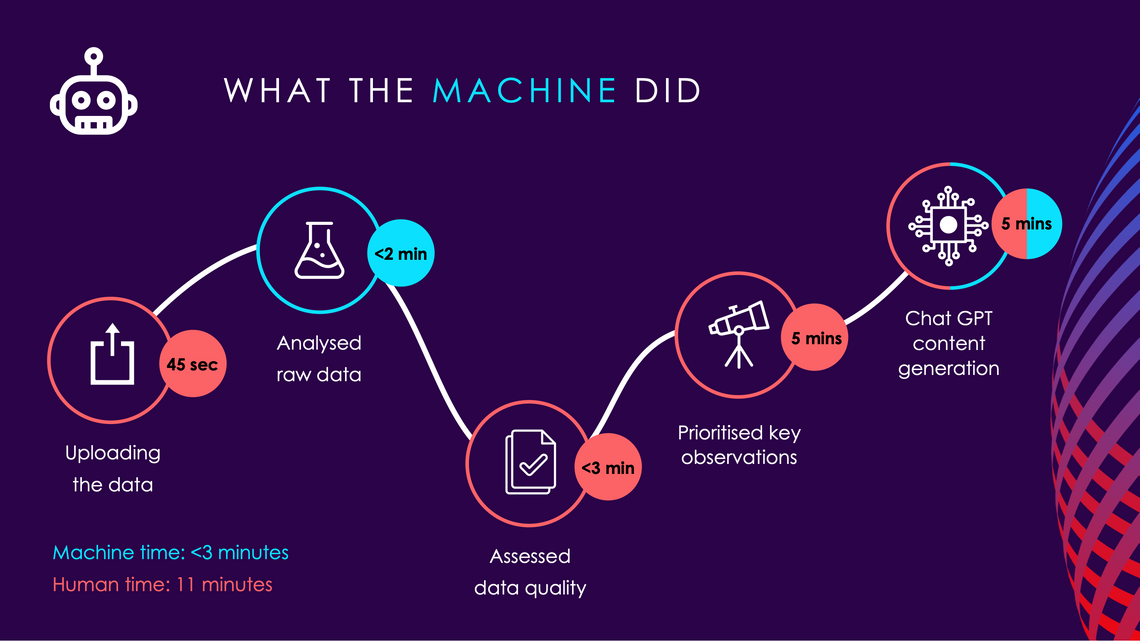
However, while AI provided interesting data points, the depth of understanding was lacking, and systems such as ChatGPT required multiple human prompts to steer the work in the right direction.
Humans choose data differently from the machine – both in the process and in the content. In terms of process, they put the raw data into spreadsheets and reviewed the data together as a human team in Excel. While time-consuming (at 5-7 hours), this allowed for a detailed analysis of the data, identifying significant patterns and trends without missing the human story behind the numbers. The RedC team then collaborated on a summary of 15 slides, a visually engaging PowerPoint that encapsulated the key story headlines, offering a high-level overview of the most important findings and promoting the WIN data - as per the brief. The human participants' ability to distil complex information into attractive and digestible formats highlighted their talent in storytelling and their commitment to transforming data into creative and powerful narratives.
What can we learn from each other? To leverage the human effect for storytelling
The experiment, while a fun exercise in the man vs machine debate, highlighted a crucial question: What can we learn from each other to the benefit of both? Both the AI and the human team demonstrated a unique set of strengths and weaknesses for storytelling and data. AI impressed us with its speed and efficiency, while humans showcased their intuitive understanding of narrative construction, context and the ability to distil complex information into compelling stories. To truly harness the power of storytelling, the innate creativity, empathy, and nuanced understanding of behaviour and socialisation is a tool that remains unique to people, not machines. If you’d like to see the actual results (the presentations, the press release, follow-up report and the LinkedIn posts), please let me know.
The trick to making the most of AI is to approach it as what it was intended to always be, a tool, not a complete solution. Working out how best to integrate that tool into the research process makes it, in the words of Richard Colwell of RedC, “a game-changer”. Once harnessed, AI can help to amplify humankind’s natural storytelling abilities, integrating the ones and zeros into captivating narratives to help us better understand ourselves.
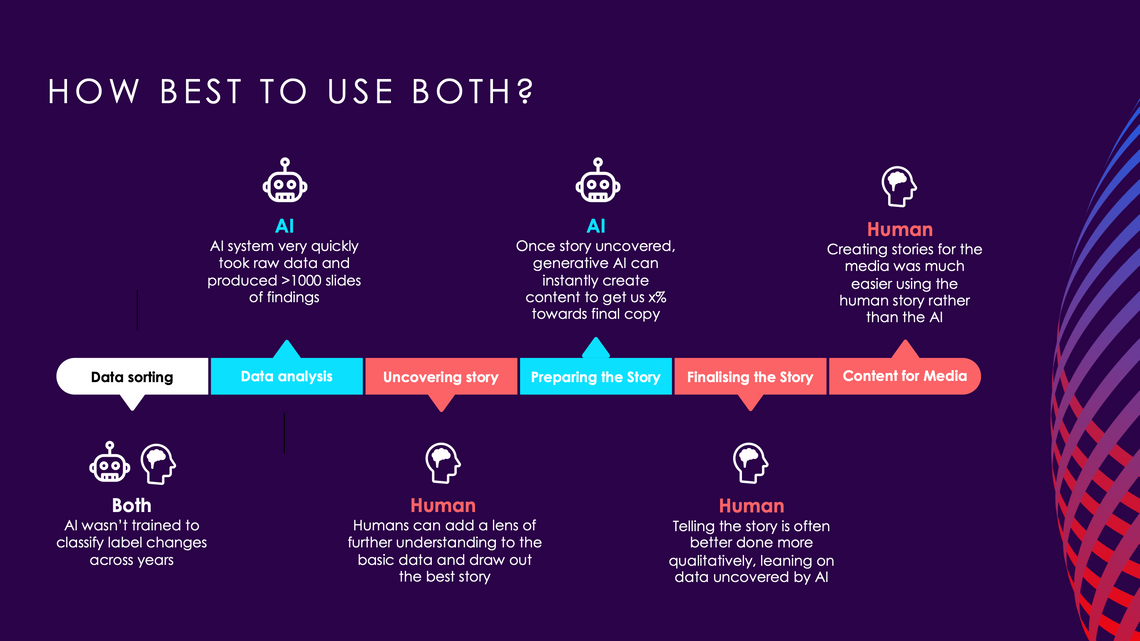
Lucy Davison
Founder & Managing Director at Keen as MustardLucy is the Founder and Managing Director of Keen as Mustard Marketing with over 30 years of experience in B2B marketing, strategy and communications. She is a sought after keynote speaker and has written extensively for The Financial Times, The Independent, Marketing Week and Retail Week and judged the AQR and Market Research Awards. She is also a former Council Member of ESOMAR.

